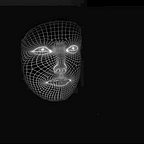Honoring the brick: A modernist reflects on the success of ChatGPT
If you think of Brick, you say to Brick, ‘What do you want, Brick?’ And Brick says to you, ‘I like an Arch.’ And if you say to Brick, ‘Look, arches are expensive, and I can use a concrete lintel over you. What do you think of that, Brick?’ Brick says, ‘I like an Arch.’ And it’s important, you see, that you honor the material that you use. [..] You can only do it if you honor the brick and glorify the brick instead of shortchanging it.
Louis Kahn, 1971
Uncovering deep human needs is at the heart of the design process where I work. This approach allows us to focus on the impact a product, service, or technology has on the people and systems it interacts with, ultimately keeping humans and humanity at the center of our design process. We believe that a design solution must be desirable first and foremost. Feasibility–the characteristics, strengths, and limitations of the materials and systems we are working with–is often regarded as a secondary constraint rather than a primary source of inspiration.
I have to admit that I’ve never been comfortable with this hierarchy. I can’t help but think back to when I was first exposed to the philosophy behind Modernism in college. The style’s repetitive and monumental forms appeal to me, as does its emphasis on function as the driver of form. But Modernism goes beyond aesthetics. It values its medium and believes that the best design directly expresses how it was made and what it is made of.
Generative AI became mainstream in late 2022. The reasons behind this sudden surge in interest are not entirely clear, even to OpenAI, the creator of ChatGPT. After all, the technology is not significantly different from previous iterations (GPT-3, 2020) or specialized use cases (InstructGPT, early 2022). The accessibility of ChatGPT’s web interface has obviously played a major role in its rapid adoption. But, I believe, its success is also about letting the “brick express its brickness.”
Large Language Models (LLMs) and their image-based counterparts (diffusion models) synthesize and abstract their training data, granting us access to a substantial portion of human understanding* in a legitimately new way. Individual humans, though, have been gaining and sharing understanding for quite awhile. Mostly, we do that by talking to each other!
The ChatGPT interface creates a simple, straightforward surface for conversations. There’s a box to type in, a dropdown to choose your model flavor and, if you’re on a desktop, a history to the left. Nearly all of the screen is devoted to the conversation.
Where the ChatGPT interface does add detail is just as interesting. The tool provides insight into an LLM’s context (its active memory) and how that makes its behavior contingent on your current conversation’s history. Messages from the system drip in, one token at a time, reflecting how LLMs generate continuations on a granular level. Your input is editable, and performing an edit triggers a new response from the system. This encourages you to refine your approach and develop basic prompt engineering skills. As you observe the system’s changes in response to your edits, you naturally form heuristics and a theory of mind about ChatGPT’s inner workings. OpenAI also directly and granularly requests user feedback, reinforcing the original purpose of the interface as a research tool, and suggesting how you are contributing value back to OpenAI. Each conversation becomes a revisitable snapshot. Although these conversations exist in separate universes of understanding, you can always reopen them and continue where you left off.
ChatGPT is not a specialized use case or a seamlessly integrated piece of techno-magic that “just works.” It is an honest, straightforward, and barebones expression of its underlying technology. Part of ChatGPT’s success, I believe, stems from the clarity and precision with which it allows users to interact with the basic structure of an LLM. I am inspired to consider not just the human need we’re designing for, but the full expression of the tools and processes we’re designing with.
*It is important to acknowledge that this understanding reflects the data present on the internet and in training databases, and as such, carries the limitations and biases of these sources. Without careful system design and explicit guidance, naive versions of these systems will exhibit the racism, gender bias, and Western-centricity present in the training data.
